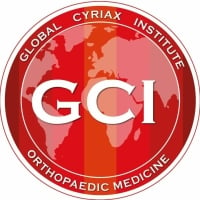Shoulder abduction weakness: what could be the reason?
Diagnostic Considerations in Weakness of Resisted Shoulder Abduction
Weakness during resisted abduction of the shoulder is a common clinical finding, often prompting suspicion of rotator cuff pathology. However, multiple underlying conditions—ranging from muscular to neurological—can contribute to this sign. Accurate diagnosis requires careful differentiation through clinical examination and patient history.
1. Rotator Cuff Tear (Supraspinatus Tendon)
The most common cause of true weakness during resisted abduction is a full-thickness tear of the supraspinatus, a key muscle in initiating shoulder abduction.
- Key features: Sudden weakness, often following trauma or repetitive overhead activity; may be accompanied by pain and limited range of motion.
- Test: Weakness and/or pain in the empty can or Jobe’s test position.
2. Axillary Nerve Injury
The deltoid muscle, innervated by the axillary nerve, is also critical for abduction beyond 15°.
- Key features: History of dislocation, blunt trauma, or humeral fracture; numbness over the lateral shoulder ("regimental patch").
- Test: Weakness isolated to abduction with preserved rotator cuff strength.
3. Cervical Radiculopathy (C5 Nerve Root)
Compression or irritation of the C5 nerve root can cause weakness in both supraspinatus and deltoid muscles.
- Key features: Neck pain, radicular symptoms, altered reflexes, and possible sensory changes in the C5 dermatome.
- Test: Positive Spurling’s test, weakness not localized to one muscle alone.
4. Neurological Disorders (e.g., Parsonage-Turner Syndrome)
Also known as brachial neuritis, this condition can cause acute shoulder pain followed by profound weakness.
- Key features: Sudden onset of burning pain, followed by atrophy and motor loss in specific shoulder muscles.
- Test: EMG and nerve conduction studies aid in confirmation.
Conclusion
Weakness during resisted shoulder abduction is a non-specific finding with multiple possible origins—including tendinous, muscular, neural, and joint-related causes. Differentiating among these requires combining functional tests with a detailed clinical history, neurological screening, and targeted imaging when necessary. Accurate identification of the cause is essential for effective, tailored treatment.
